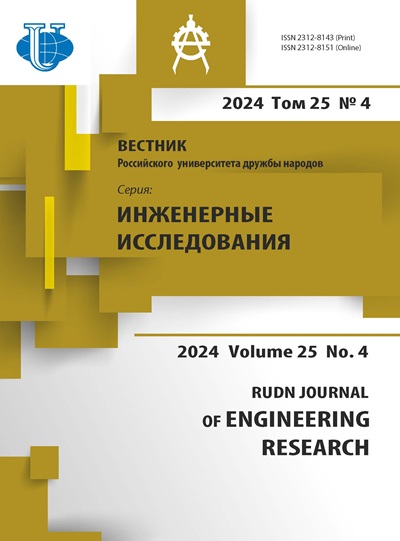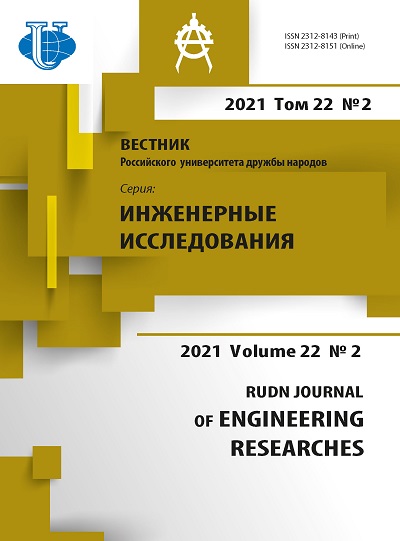Разработка конструкции, изыскания и проектирование экваториальной эстакады общепланетарного транспортного средства
- Авторы: Юницкий А.Э.1,2, Бочкарев Д.И.2,3, Артюшевский С.В.2,3
-
Учреждения:
- Общество с ограниченной ответственностью «Астроинженерные технологии»
- Закрытое акционерное общество «Струнные технологии»
- Белорусский государственный университет транспорта
- Выпуск: Том 22, № 2 (2021)
- Страницы: 205-216
- Раздел: Статьи
- URL: https://journals.rudn.ru/engineering-researches/article/view/27552
- DOI: https://doi.org/10.22363/2312-8143-2021-22-2-205-216
Цитировать
Полный текст
Аннотация
Взлетно-посадочной полосой для общепланетарного транспортного средства служит уникальное по масштабам и сложности инфраструктурное сооружение - эстакада протяженностью 40 тыс. км, охватывающая планету по экватору и совмещенная с рельсострунным транспортом «второго уровня». Данное сооружение является опорной конструкцией для общепланетарного транспортного средства и коммуникационной артерией, обеспечивающей перемещение пассажиров и грузов, а также передачу больших объемов энергии и информации. Для обеспечения равномерного старта общепланетарного транспортного средства необходимо минимизировать возмущения, вызванные вертикальными и горизонтальными кривыми эстакады. При этом проектирование данного сооружения должно быть выполнено с учетом географических и природно-климатических особенностей тропиков как на сухопутных, так и морских участках. В статье рассмотрено расположение эстакады общепланетарного транспортного средства в плане, обозначены наиболее сложные участки и способы их преодоления. Предложены варианты компоновки эстакады общепланетарного транспортного средства, описаны основные функциональные зоны и конструктивные элементы. Определены факторы, влияющие на реализацию проекта, проблемы, неизбежные при разработке основных элементов, а также решения по оптимизации транспортно-инфраструктурного комплекса. Кроме того, предложены решения по оптимизации трассировки эстакады для преодоления горных участков земной поверхности с учетом требуемых взлетно-посадочных характеристик общепланетарного транспортного средства. Также проведена оценка влияния подвижного состава рельсострунного транспорта «второго уровня» на волновые колебания погруженного в воду транспортного тоннеля-поплавка, с целью обеспечения стабильной ровности пути для перемещения гиперскоростного транспорта и ленточных маховиков общепланетарного транспортного средства, имеющих космические скорости движения.
Об авторах
Анатолий Эдуардович Юницкий
Общество с ограниченной ответственностью «Астроинженерные технологии»; Закрытое акционерное общество «Струнные технологии»
Автор, ответственный за переписку.
Email: a@unitsky.com
ORCID iD: 0000-0003-1574-3539
генеральный конструктор, Общество с ограниченной ответственностью «Астроинженерные технологии»; генеральный конструктор, Закрытое акционерное общество «Струнные технологии», кандидат философских наук
Республика Беларусь, 220089, Минск, ул. Железнодорожная, д. 33; Республика Беларусь, 220089, Минск, ул. Железнодорожная, д. 33Дмитрий Игоревич Бочкарев
Закрытое акционерное общество «Струнные технологии»; Белорусский государственный университет транспорта
Email: bochk_dmitr@mail.ru
ORCID iD: 0000-0002-9165-3634
декан строительного факультета, Белорусский государственный университет транспорта; ведущий инженер, Закрытое акционерное общество «Струнные технологии», кандидат технических наук
Республика Беларусь, 220089, Минск, ул. Железнодорожная, д. 33; Республика Беларусь, 246653, г. Гомель, ул. Кирова, д. 34Сергей Владимирович Артюшевский
Закрытое акционерное общество «Струнные технологии»; Белорусский государственный университет транспорта
Email: s.artyushevskiy@unitsky.com
ORCID iD: 0000-0003-0838-9228
заместитель генерального конструктора по науке, Закрытое акционерное общество «Струнные технологии»; магистрант, Белорусский государственный университет транспорта
Республика Беларусь, 220089, Минск, ул. Железнодорожная, д. 33; Республика Беларусь, 246653, г. Гомель, ул. Кирова, д. 34Список литературы
- Малых Г.И. Краткая история развития транспортной техники // Современные технологии. Системный анализ. Моделирование. 2009. № 1 (21). С. 169-172
- Unitsky A. String Transport Systems: On Earth and in Space. Minsk, Belarus. SkyWay Technologies Publ.; 2019
- Юницкий А.Э. Инженер. М.: Изд-во Эксмо, 2020. 404 c
- Simovic M, Krasic S, Nikolic M. Floating Solutions: The New Meaning of Mobility. In: Wang C., Lim S., Tay Z. (eds.). WCFS2019. Lecture Notes in Civil Engineering (vol. 41). Springer, Singapore. doi: 10.1007/978-981-13-8743-2_23
- Palraj S, Venkatachari G, Subramanian G. Bio-fouling and Corrosion Characteristics of 60/40 brass in Mandapam Waters. Anti-Corrosion Methods and Materials. 2002;43(9):194-198. doi: 10.1108/00035590210426445
- Jin C, Kim M. Dynamic Responses of a Moored Submerged Floating Tunnel under Moving Loads and Wave Excitations. The 28th International Ocean and Polar Engineering Conference. International Society of Offshore and Polar Engineers. 2018
- Yuan Z. et al. Displacement Response of Submerged Floating Tunnel Tube Due to Single Moving Load. Procedia engineering. 2016;166:143—151. doi: 10.1016/j.proeng.2016.11.577.
















